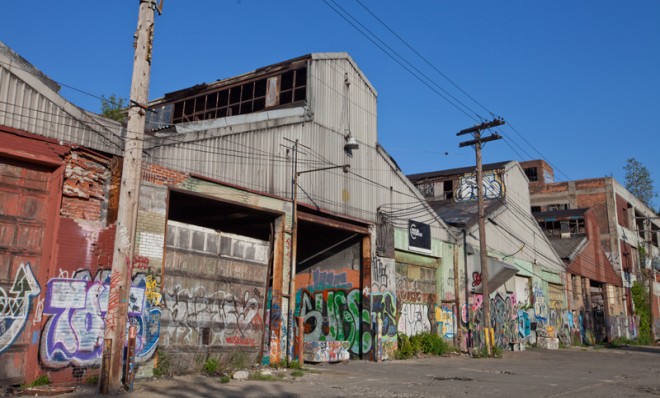A federal bailout for Detroit is a terrible idea
The Motor City is in need of deep structural changes — and a lifeline from Uncle Sam would set a dangerous precedent for other debt-bloated cities


No one could have been surprised by the decision of Detroit's emergency manager to file for municipal bankruptcy last week. Fifty years ago, the center of American auto dominance ranked as the country's wealthiest city. After decades of decline in both its private sector and its population, its status as a cautionary tale has long been established.
The central question now is whether state and local governments across the country draw the right lesson from Motor City's woes. And with some calling for a federal bailout of Detroit — including Steven Rattner, the Obama administration's car czar — it appears that may not be the case.
The appointment of Kevyn Orr earlier this year as an "emergency manager" only crystallized the acute nature of Detroit's crisis, effectively taking the city out of the hands of elected officials and ceding sovereignty over its affairs to the state of Michigan and its Republican governor, Rick Snyder. Within 45 days of taking control of the city's finances, Orr publicly declared Detroit insolvent and on its way to the first major American municipal bankruptcy in decades, unless creditors agreed to accept pennies on the dollar to avoid it.
The Week
Escape your echo chamber. Get the facts behind the news, plus analysis from multiple perspectives.

Sign up for The Week's Free Newsletters
From our morning news briefing to a weekly Good News Newsletter, get the best of The Week delivered directly to your inbox.
From our morning news briefing to a weekly Good News Newsletter, get the best of The Week delivered directly to your inbox.
That created the largest Chapter 9 filing in the U.S., although it's hardly alone at the moment. In the past four years, 38 municipalities have filed for bankruptcy protection with federal courts. The largest of these before Detroit, Jefferson County in Alabama two years ago, involved a default on $1.7 billion in obligations. That edged out Orange County, California, which briefly entered into bankruptcy protection in 1994 as a result of corruption, with $1.4 billion in obligations due to a collapse in the derivatives market. Detroit's bankruptcy dwarfs all of them, at an estimated $18 billion to $20 billion.
A large part of the debt come from pensions. Two retirement plans constitute nearly a fifth of the overall problem, with almost $3.5 billion in obligations: The city's General Retirement System and its Fire Retirement System. Throw in another $1.6 billion owed to U.S. Bank for backstopping other retirement obligations, and the total rises to more than $5 billion, at least a quarter of the debt load. Orr attempted to negotiate with the public-employee unions to restructure this debt, but the problem had festered for so long that Orr didn't have the assets to meet any demand that the unions could accept. Like many other state and local governments across the country, Detroit stuck with a defined-benefit structure rather than the defined-contribution model to which the private sector switched decades earlier. As benefits increased and population declined, the question wasn't whether a day of reckoning would arrive, but when.
Detroit's other obligations outweigh the pension issue, but they don't have the same political impact. For instance, no one wants to see firefighters who spent decades risking their lives for their fellow citizens left without the retirement plans on which they relied, even though the bill for the unfunded liabilities there runs to $1.437 billion. The same can be said for other retirees of Detroit's public sector to a greater or lesser degree. Add to that the very real issue of the city's services to the poor suddenly out of cash, and one can understand why some voices want the federal government to extend a bailout.
There are a couple of problems with this approach, however — first and foremost of which is that U.S. taxpayers have already conducted an indirect bailout of Detroit. Starting in the Bush administration and extending into the Obama administration, the federal government invested around $80 billion rescuing Detroit's auto industry from its own set of very similar problems. Specifically, the bailout allowed the automakers to emerge from a politically-midwifed bankruptcy that relieved them from a large part of their past pension obligations, based on the same problematic structure of defined-benefit pensions. Their resurrection was supposed to revitalize Detroit; look how well that turned out.
A free daily email with the biggest news stories of the day – and the best features from TheWeek.com
Governor Snyder hits the mark when he notes that a federal bailout won't fix the underlying problems, at least not without drastic reform. It also would send a bad message to investors, who have poured money into Detroit bonds despite its performance over the last decade. "Basically, Detroit hasn't had a positive fund balance since 2004 in its general fund. 2004," Snyder emphasized to Bob Schieffer on Face the Nation. "If you were lending to the city of Detroit in the last few years, didn't you understand there were major issues and problems?" In other words, investors looking for premium returns on municipal bonds allowed local politicians to paper over the collapse — so why should they get a bailout on their bad investment?
That points to the much larger danger in a federal bailout. If Detroit were a singular event, a collapse from uniquely incompetent management or corruption, then in isolation the federal government might be tempted to step in. That's not the case, though, as the escalating numbers of Chapter 9 filings attest. More cities, counties, and states teeter on the brink of insolvency, thanks to the same kinds of structural problems and the failure of political leaders and voters to address them. For instance, Stanford University warned three years ago that California's unfunded pension liabilities amounted to a whopping $500 billion — 100 times that of Detroit and six times the state budget for FY2010. A year later, a former Orange County treasurer put the total at $884 billion. A Boston College study estimates that the total of all state and local pension liabilities is $3.8 trillion, with $1 trillion unfunded, which is almost certainly a conservative estimate.
Federal bailouts will not solve this problem, nor the other problems of urban mismanagement and incompetence. Bailouts would obscure them, as well as the need to fix the structural and political issues that have led to the collapses already in motion, and those to come. Politicians and citizens who want to avoid the unpleasant duty of reform have already put off these issues for far too long. The White House can send a strong signal for responsibility by refusing to rescue cities and states from their own folly, starting with Detroit.
Edward Morrissey has been writing about politics since 2003 in his blog, Captain's Quarters, and now writes for HotAir.com. His columns have appeared in the Washington Post, the New York Post, The New York Sun, the Washington Times, and other newspapers. Morrissey has a daily Internet talk show on politics and culture at Hot Air. Since 2004, Morrissey has had a weekend talk radio show in the Minneapolis/St. Paul area and often fills in as a guest on Salem Radio Network's nationally-syndicated shows. He lives in the Twin Cities area of Minnesota with his wife, son and daughter-in-law, and his two granddaughters. Morrissey's new book, GOING RED, will be published by Crown Forum on April 5, 2016.
-
 7 bars with comforting cocktails and great hospitality
7 bars with comforting cocktails and great hospitalitythe week recommends Winter is a fine time for going out and drinking up
-
 7 recipes that meet you wherever you are during winter
7 recipes that meet you wherever you are during winterthe week recommends Low-key January and decadent holiday eating are all accounted for
-
 Nine best TV shows of the year
Nine best TV shows of the yearThe Week Recommends From Adolescence to Amandaland
